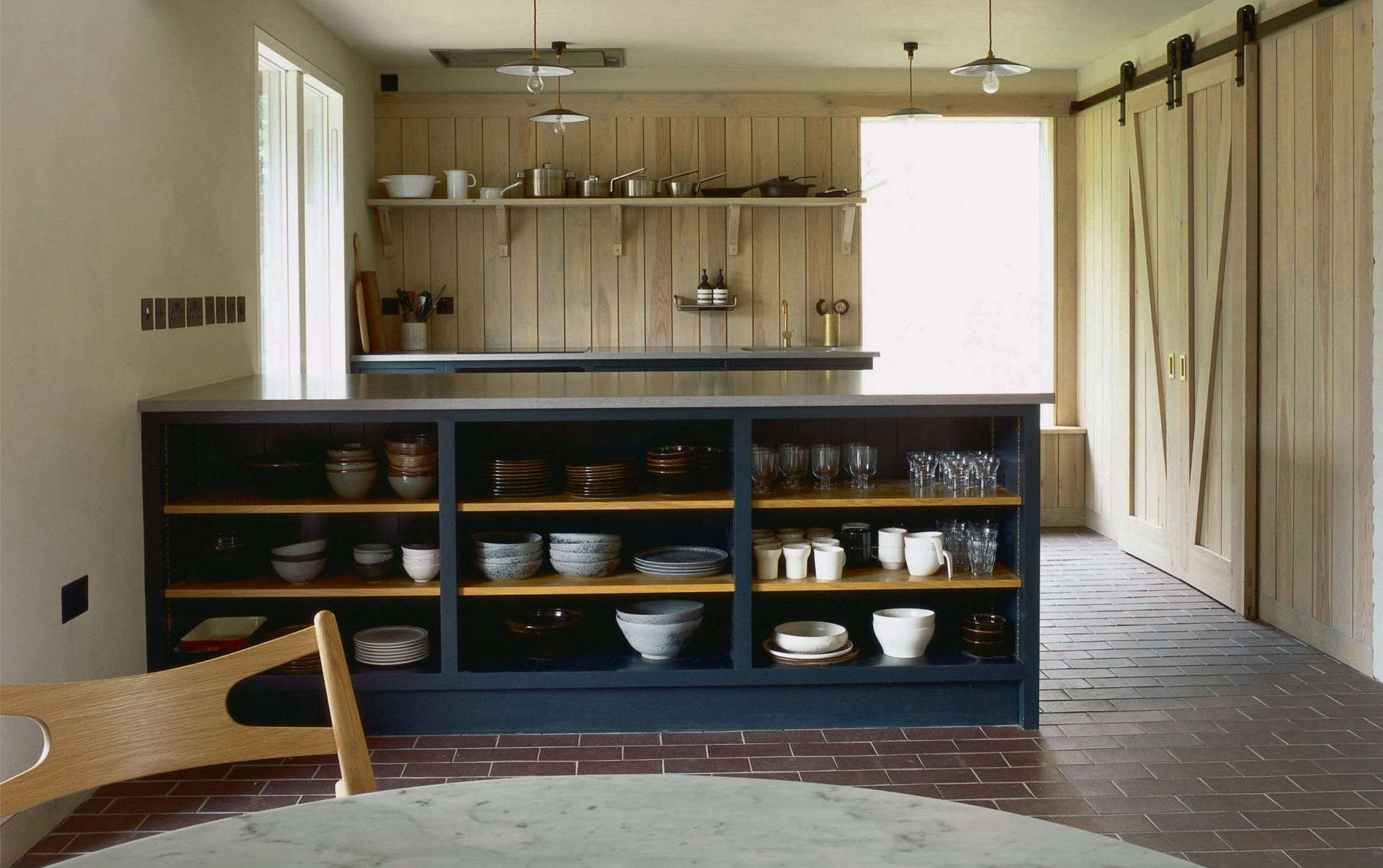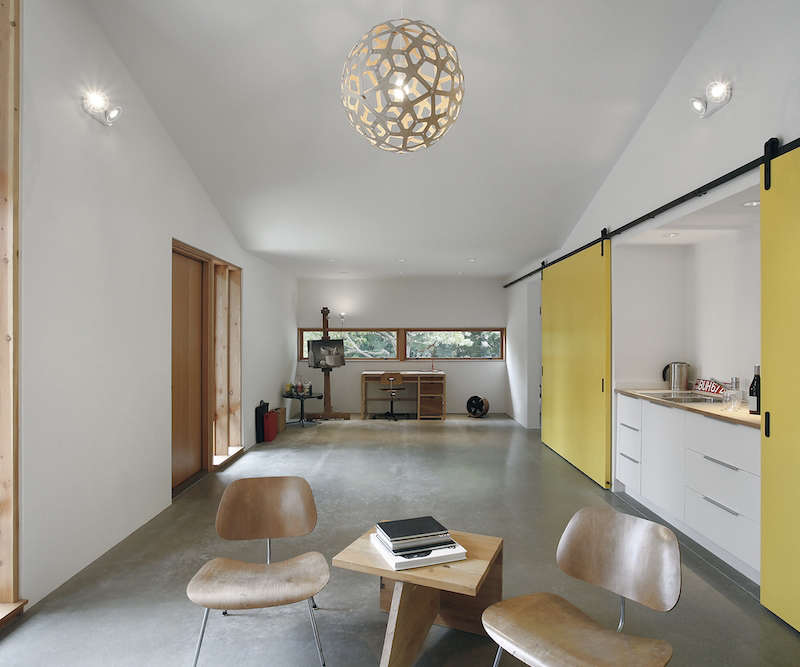UK landscape designer Emily Erlam wanted to move her children and husband from London back to the countryside where she grew up in Norfolk county, East Anglia. The couple found an old tithe barn and piggery, formally owned by the diocese, that still sits in the parish of Edgefield.
While disused agricultural buildings dot the English landscape, reminding us of simpler bucolic times, they are less than simple to update for modern living. Enter Niall Maxwell and his London- and Wales-based firm Rural Office for Architecture, who are known for developing vernacular and contextual design responses. Working together, the pair developed an elegant scheme that is so sophisticated in its subtlety, it is barely noticeable against the characteristically flat Norfolk landscape. Come take the tour and see what they did.
Photography by Ioana Marinescu.

Above: The existing piggery and tithe barn were originally separate buildings positioned at a 90 degree angle to one another. Maxwell connected the two buildings with a new structure that houses the main living area with an open kitchen, dining, and living space. The kitchen cabinets are from British Standard.

Above: The sliding barn door on the right opens up to the tithe barn, which can be seen from the kitchen window. Maxwell was careful to select materials that could balance the building’s existing heritage and its contemporary use. The stained wood panels and brick floor, which run throughout the interiors, blend in seamlessly with the brick and flint masonry of the local agricultural vernacular.

Above: A view to the living area, which is the beginning of the private bedroom area. The new connecting structure has views of two courtyard gardens on either side. “The living area’s brick floor was inspired in part by a midcentury American house by the Bauhaus master Marcel Breuer,” Maxwell says. “The client loved this and requested we use it here.” The dining table is a Poul Kjí¦rholms PK54 and is surrounded by Hans Wegner chairs. And in the living area, the vintage Danish sofa is by Fabricius & Kastholm. The large black and brass pendant over the dining table is from Rubn.

Above: The brick fire surround in the living area contains a deep recess for logs and kindling. On the left of the soffit of the portal is the new structure and on the right is the piggery, which has been converted into a suite of bedrooms and bathrooms. The brick floor unifies the two spaces.

Above: A view of the hallway from one end of the piggery to the other.

Above: Maxwell detailed the wooden barn doors and wall panels to create a continuous wall to link the rooms at either end and unify the space. The doors and wall cladding are all softwood stained with a gray toned oil. Shaker pegs help to keep things organized in the bedrooms. The sliding barn door hardware is by Coburn.

Above: A view down the hallway of the piggery in the other direction lends a view to a child’s bedroom.

Above: Working within the constraints of a listed building, Maxwell’s conservation remit was to retain as much of the traditional vernacular fabric as possible while inserting new accommodations within the existing remains. New window openings were, therefore, not an option in the piggery. The architect introduced light and ventilation from skylights above.

Above: The wood paneling in the rest of the house is consistently carried into the bathrooms. The brass fixtures and fittings are from Vola.

Above: A view of one of the two inner courtyards, which is formed by the connection of the tithe barn (L) and the piggery (R). “These gardens were imagined as rooms, connecting the spaces and providing a focus from each adjoining space,” Maxwell says.

Above: The interior of the tithe barn, which will be renovated in Phase II with additional living spaces.

Above: Looking toward the corner where the new building connects to the piggery, whose outer flint walls were retained with a new portal structure that could support a floating untreated zinc standing-seam pitched roof. This roof extends to include the connecting pavilion to the barn. The inner courtyard walls are clad in new red cedar timber.

Above: A rain chain drains the water from the roof.

Above: The view from the road shows that the hierarchy of the barn within the context of the complex and flat Norfolk landscape remains extant.

Above: The plan illustrates how the the new structure containing the open living area connects the two existing buildings on the site.
See more rural architecture in Norfolk:
Christine is also the writer of the new lifestyle and wellness blog My Contents Have Shifted–A Fabster’s Musings on Being Fifty and Beyond.




Have a Question or Comment About This Post?
Join the conversation